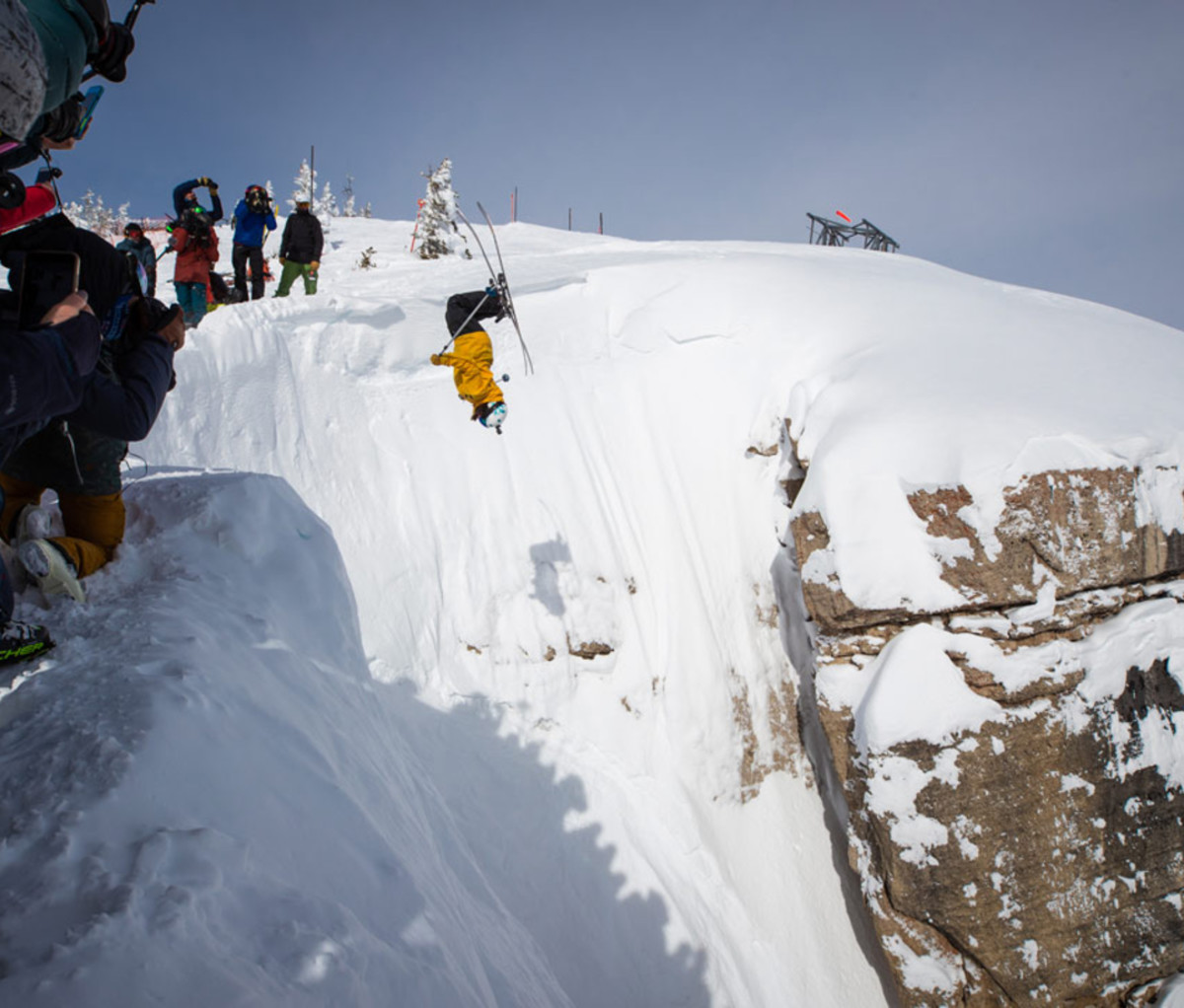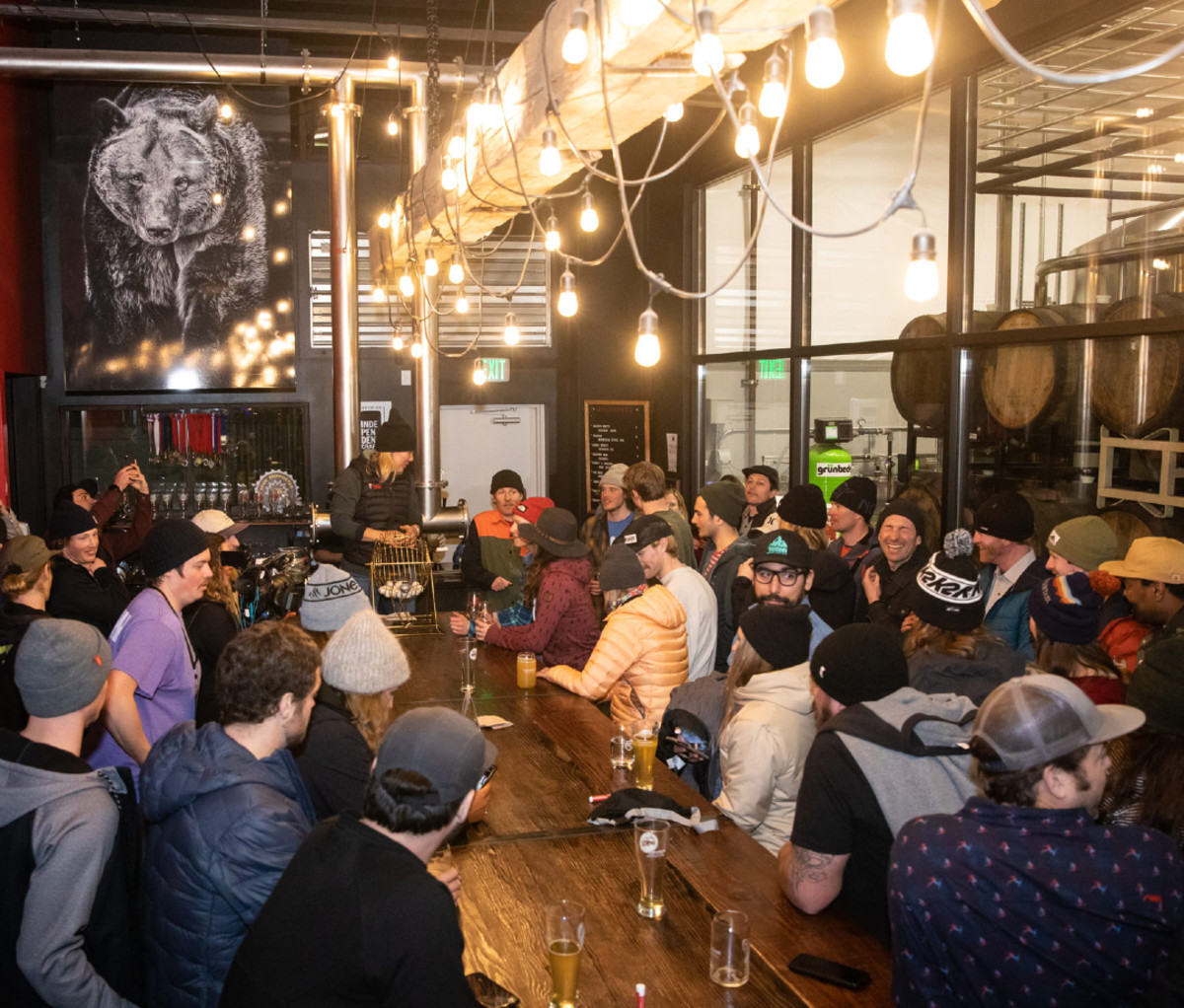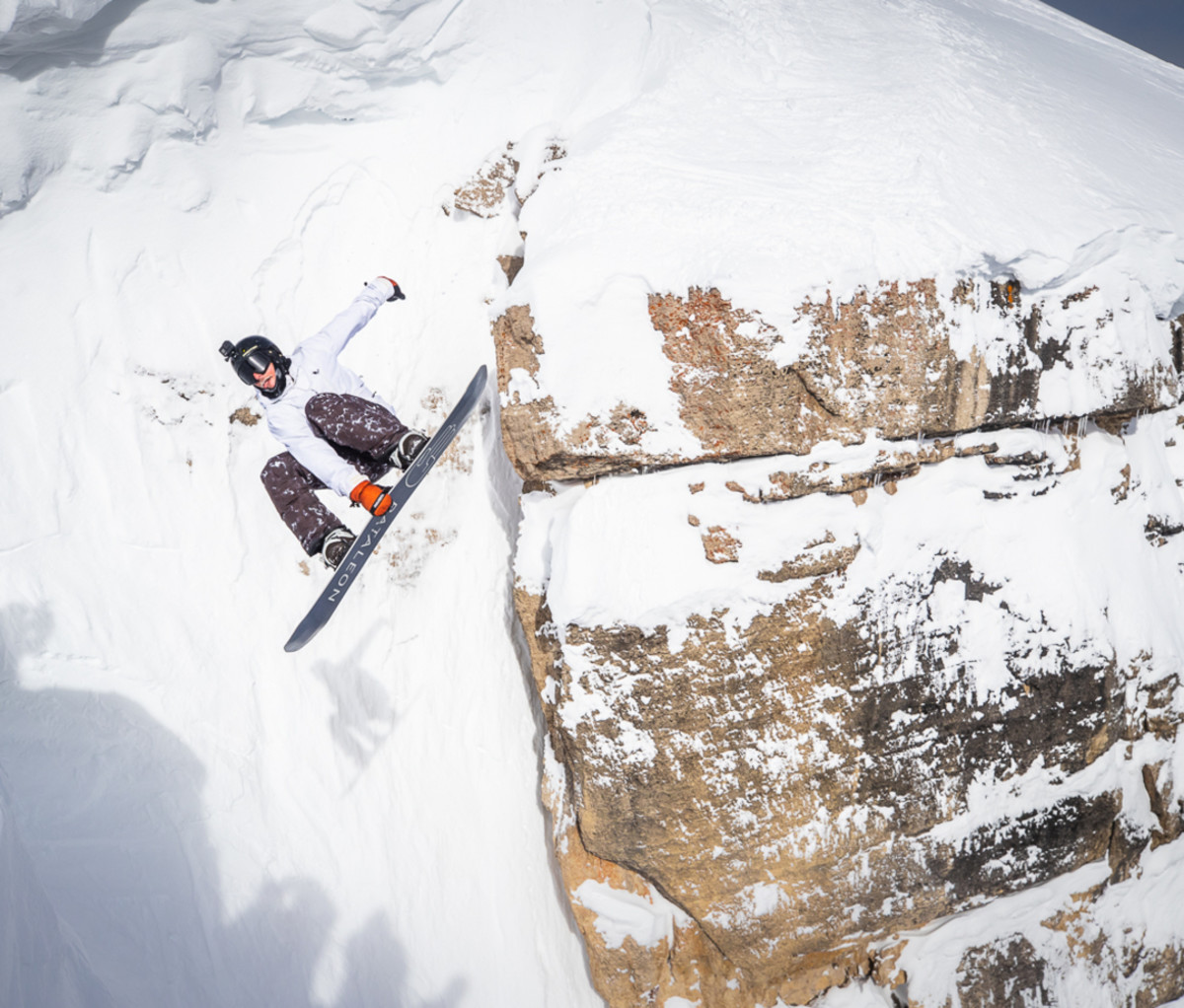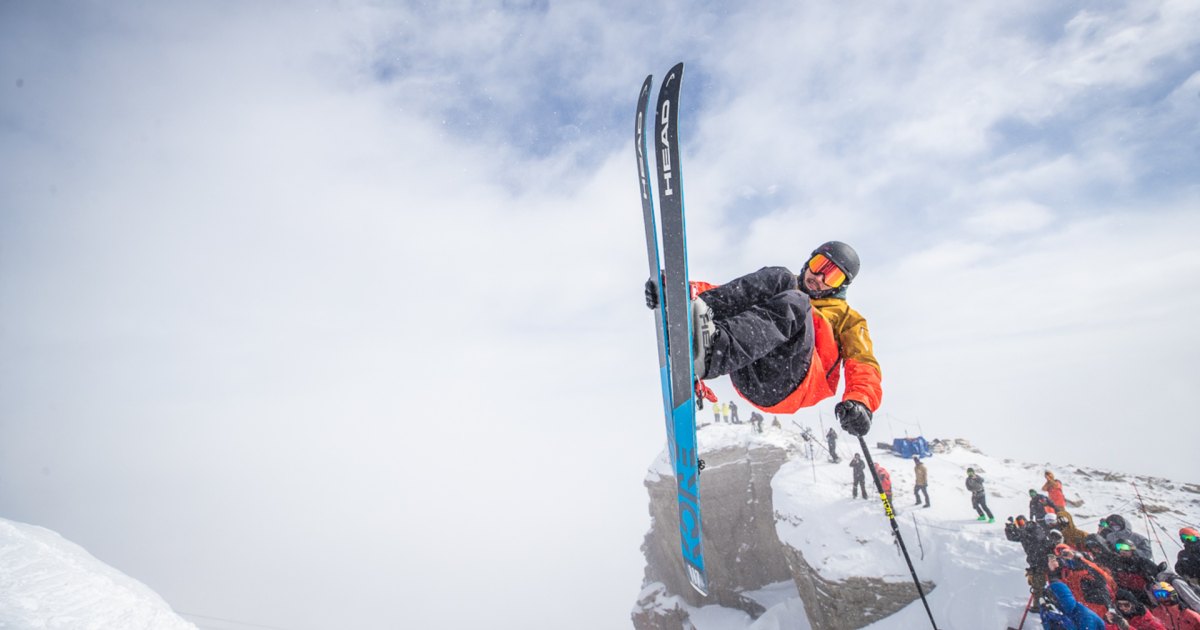No products in the cart.
Fitness Tips
How Kings and Queens of Corbet’s Ski and Snowboard Event Exploded
Corbet’s Couloir at Jackson Hole Mountain Resort is one of the most famous in-bounds runs in the world. It begins with a near sheer 30-foot drop onto an incredibly steep face that slingshots you into a field toward bumps and rocks. It might be compared to jumping off a high dive and landing on Wile E. Coyote’s rocket-powered roller skates. That all happens in full view of the Jackson Hole tram and anybody else who happens to be gathered at the bottom.
Seems like a fun place for a contest, eh?
The Kings and Queens of Corbet’s is about to run for its fourth year in a row. In that short time, it went from a small indie event to being one of the most popular (if not the most popular) ski and snowboard contests on Earth. We’re talking 9 million impressions on social media during the week of the contest alone. Today, we’re diving into how this contest’s meteoric rise is owed to its unique DNA.
Bloodlines
The event is the brainchild of Jess McMillan, who works in Jackson Hole Mountain Resort’s Events and Partnerships Management. Before that, she was a competitor on the International Freeskiing Tour, followed by the Freeride World Tour for eight years. For those not in the know, those are untamed big-mountain events. In short: Jess has gnar in her blood.
The idea of having a contest in Jackson had been on her mind for a long time. There have been other freeride contests held at the resort over the years, but they never quite found the right venue. When Jess got the opportunity to organize something, the answer seemed obvious: Corbet’s. There was already a “King of Corbet’s,” legendary freeskiing pioneer Doug Coombs (who died in 2006), who was a hero of Jess’s. “I was like if we’re going to have Kings, then we’ll have Queens, too…I had a few beers, did a little brainstorming, and here we are.”
That little bit of brainstorming resulted in something truly unique. Jess envisioned an even playing field, with men, women, skiers, and snowboarders all on the same course. There would be a men’s division and a women’s division for prizes, but it would be equipment-agnostic, so it wouldn’t matter whether you were on skis or a board. Perhaps most unique of all is that the winners are determined by the very athletes who are competing.
As an athlete, she never liked that competitions were judged by people who weren’t up there, who weren’t experiencing the conditions and jumps; she felt too often sponsorship seemed to be a factor in who ended up on the podium, since judging is subjective. She wanted everything about this contest to put the athletes first.
The first year of The Kings and Queens of Corbet’s really had that grassroots feel to it. Jess basically tapped into her personal rolodex of athletes to bring in 24 people she knew would go big, but also make smart choices. As the contest blew up, applications started pouring in, and a board was created to ensure fairness. More than 150 applications to compete came in this year alone. Jess’s ultimate goal is to have 12 women and 12 men, and six skiers and six snowboarders within each group.
Going into that first year, they had no idea it would catch fire. Jackson Hole and Teton Gravity Research had small film crews on site, and many athletes wore GoPros, but there was no live broadcast. There was just a guy who worked for the resort, standing at the top of the couloir with his iPhone, posting Instagram stories as people jumped off. People started freaking out over these clips and asked him to livestream it from his phone, which he did to much fanfare. It looked so low-budget that his boss made him stop, but that footage, and the edits that would come out later effectively broke the internet—and everybody wanted more.

The Perfect Venue for Going Viral
In retrospect, it seems obvious that a contest like this would go viral in the age of social media. A full run, from top to bottom, generally takes 30–40 seconds, which makes it the perfect length for an Instagram video, making highlights extremely sharable and quickly digestible.
Arguably more important, though, is the inherent wow factor of these runs. The majority of people at home who watch an Olympic Slopestyle competition don’t understand the technical intricacies of what makes one type of grab more difficult than another, how much harder it is to go “switch,” or maybe even what “going switch” means. But anybody can understand a backflip off a 30-foot cliff onto a steep, jump-filled face. We humans have a visceral understanding of that, the same way our palms sweat when watching Alex Honnold climb El Capitan without a rope. It’s amazing and terrifying, and when someone somehow survives that madness and comes out smiling, you want to grab your buddy and say, ‘Dude, look at this!’
The venue itself has evolved from the first iteration of the contest. Initially, there were no added features. It was just that big, scary drop, then the steep pitch to the finish line. “It was kind of a huck-fest, and I really didn’t want it to be a huck-fest,” McMillan told me. “I wanted to add more slope-style features for the athletes, so they didn’t feel like they had to go big off the nose. I wanted more variety there.”
That becomes increasingly important as the contest gets into second runs. The landing at the bottom of the cliff gets more and more chewed up and crashes become more likely. Fortunately, athletes can opt to take the “goat path,” which is a near-sheer drop requiring two strong, precise turns in rapid succession. It’s only slightly less treacherous than the cliff jump. From there, the park crew now builds in several jumps throughout the rest of the run, so athletes would have more opportunities to score points (or get wrecked).
In the second year of the contest, Jackson Hole partnered with Red Bull on the media side but hired a third-party production crew to do the livestream, and it was plagued with issues (e.g. missed runs and a lack of audio). Even with that, the numbers were through the roof. It didn’t hurt that snowboard luminary Travis Rice entered and won the contest, or that paraplegic athlete Trevor Kennison became the first person to jump off Corbet’s massive cornice on a sit-ski. So in 2020, Red Bull decided to take matters into its own hands and make sure it got done right. More than 5,000 pounds of production gear went up the tram and had to be hiked over to the edge of the couloir, including cameras, drones, and miles of fiber optic cable. Ace commentators were brought in, too, and everything was locked and loaded.

The Big Day 2020
Each year the contest has a week-long holding period, so the organizers can run the competition in the best possible conditions. On a Monday evening, everybody gathered at the bar of the Continuum Hotel, at the base of the mountain, where most of the athletes were being hosted. In her understated way, Jess simply said, “We’re going for it tomorrow.” It was a 10 a.m. start with what looked like a four-hour weather window. The couloir had been roped off for 10 days ahead of the contest window, to allow it to fill with snow—and, thankfully, it had. She described the snow as “Not light powder, but stompy and fast.” Translation: Your landings should be reasonably soft, but then you’ll take off like a bat out of hell.
Days before, at the welcome party held at a local brewery, the athletes took turns drawing lottery-style numbered balls out of a spinning basket to determine the running order. The athletes all took the first tram up on the morning of the event. Spirits were extremely high, but the nervous energy was palpable. A big showing at this event could be huge for some of their careers, but mistakes here have serious consequences, and bodies have been broken here.
Local skier and two-time women’s first-place finisher Caite Zeliff won the lottery and would be going first, looking to three-peat as Queen. The advantage to going first is that you’ve got a clean canvass of untouched powder in front of you, but you’re also the guinea pig, so there’s a lot of pressure and a lot of unknowns. A huge crowd had gathered at the bottom of the run, and everybody—athletes, organizers, and audience both at home and in attendance—held their breaths as Zeliff was counted in.
Three, two, one…
She launched off the nose of the cliff, stuck the landing, and took off like she was shot out of a cannon. She controlled the speed, hit some jumps farther down the course, and ended up with a clean run that lasted roughly 30 seconds. The crowd went wild, and it was game on.
Everybody took it up a level this year. The third athlete to go was skier Veronica Paulsen, who became the first woman to land a backflip off the cliff at Corbet’s. She didn’t even try to hit any of the other jumps. She just stomped the landing and came in screaming with her hands in the air. Her competitors hugged her and lifted her off the ground.

“I’ve tried it every year, and blown up every year, and this was my first time stomping it and riding away,” Paulsen told me after the contest had wrapped. “I spent all summer in the gym, really focusing. When I got out this winter, my friends and I were specifically scoping cliffs that were similar to Corbet’s and I’ve been backflipping everything I possibly could this season. So, it wasn’t just luck. I really put in a lot of work for this, and I’m so excited.”
The athletes are all allowed to build their own run-ins to the lip of the cornice. Two skiers, Jake Hopfinger and Parkin Costain built a jump about 10 feet back from the edge of the cliff. People thought they were crazy, but both successfully landed double-backflips. Costain’s run was essentially perfect, and included another two backflips and a 360 on the lower jumps. It was so smooth it almost looked easy. Later in the event Mikey Marohn would become the first snowboarder to land a double backflip, but unfortunately caught an edge farther down the run.
Despite these athletes doing out-of-this-world feats, the event managed to maintain some of its local feel. This was epitomized for me when athlete Ashley Babcock, a member of the Jackson Hole ski patrol, contemplated whether or not to take her second run, saying, “I’ve got work tomorrow….”
After the first round, I got to take the tram back up and watch the rest of the contest from the edge of the cliff. I’m generally very comfortable with heights, but staring down into that drop made the hair on the back of my neck stand on end. It looks so much steeper and so much bigger from that vantage point. And yet, there were athletes like Karl Fosvedt, launching massive 1080s into the void. My brain couldn’t reconcile what my eyes were seeing with what my stomach was feeling.

Aftermath and 2021
Jess McMillan couldn’t have hoped for the event to come off any better. Not only did everybody level up from the last two years, but nobody got hurt. Plus the numbers were absolutely massive. “The explosion of this even has been incredible, with live viewers doubling in just one year,” a Red Bull official said of the 2020 competition. Jackson Hole Mountain Resort is also reporting a significant uptick. Impressions for week one were up 20 percent, year over year.
In the end, what impressed me most, was the camaraderie and humility of the athletes. “It’s more like a party,” says two-time Freeride World Tour ski champion Arianna Tricomi. “Everybody’s cheering for each other; we’re all really good friends; we like when people ski well; and we party all together.” Tricomi would finish second for an impeccably smooth run with multiple tricks.
“I think a lot of the contests out there have gotten a little too serious in this day and age,” says 2018 King and 2019 runner-up Karl Fosveldt. “And this contest is definitely serious, make no jokes about that. People are definitely coming here and swinging for the fences, but it feels like there’s just a different atmosphere at this contest. It’s more about progressing the sport, and having a good session, and we’re all really rooting for each other. We want to see everyone landing new stuff and innovating, and it happens every year…it’s a special thing.” He would go on to tell me that Kings and Queens of Corbet’s is the only contest he does any more.
After a private viewing party where the athletes sat together to watch all the footage on big screens (twice) and cast their ballots, Veronica Paulsen and Parkin Costain took home the crowns for 2020 for their historic runs. An epic party ensued, but already you could see the look in the eyes of the competitors who were contemplating next year’s contest. Thinking about that jump they almost landed. Fortunately, despite the rest of 2020 spiraling into insanity, the contest has been called on for the week of Feb. 15, 2021, with a few changes.
For starters, there will be no livestream this year. Despite its popularity, it simply requires too many out-of-town crew people to come in, and COVID-19 safety is at the forefront of the organizers’ minds. Instead, on the Monday after the contest (Feb. 22), Red Bull TV will air a more polished distillation of the competition, reducing the four-hour contest into a 90-minute “show.” People are also being encouraged to watch at home rather than attend the contest in person. For those who hope to be there, know that the aerial tram, which normally takes 100 people at a time, will only be taking 25 people maximum in each car.
For access to exclusive gear videos, celebrity interviews, and more, subscribe on YouTube!
Source link

